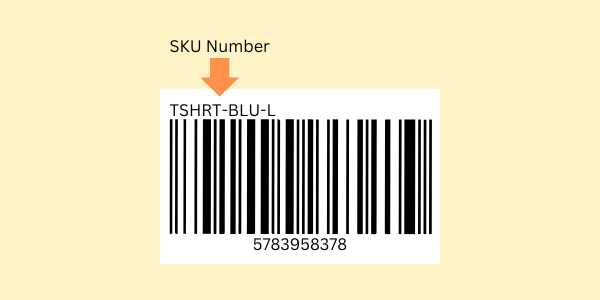Managing inventory in today’s fast-paced, multichannel eCommerce environment requires more than just keeping track of stock levels. It demands precision, efficiency, and scalability to handle increasing product lines and sales platforms. At the core of this process lies SKU Management—a critical practice that ensures smooth operations, accurate inventory tracking, and optimal product availability.
SKU (Stock Keeping Unit) management goes beyond assigning codes to products. It’s about creating a system that integrates with sales channels, maintains real-time inventory updates, and supports informed decision-making. For eCommerce businesses managing multiple platforms like Shopee, Amazon, and Shopify, effective SKU management prevents costly mistakes like overselling, stockouts, or mislabeling.
Why does SKU management matter so much?
Poorly managed SKUs lead to errors that ripple across operations. For instance:
- Overselling: Selling an item that’s no longer in stock damages customer trust and brand reputation.
- Understocking: Missing sales opportunities due to inaccurate inventory data results in lost revenue.
- Operational inefficiencies: Disorganized SKUs slow down order processing and complicate reporting.
Fortunately, modern tools like OneCart simplify SKU management by centralizing inventory data, automating updates, and providing detailed analytics across platforms. This guide explores the fundamentals of SKU management, its challenges, and actionable best practices to help you optimize operations and stay ahead in the competitive eCommerce landscape.

Table of Contents
- What is SKU Management?
- Key Components of Effective SKU Management
- Best Practices for SKU Management
- Choosing the Right SKU Management System
- Frequently Asked Questions (FAQs)
- Summary
What is SKU Management?
SKU management refers to the process of organizing, tracking, and optimizing the use of Stock Keeping Units (SKUs) in inventory systems. An SKU is a unique alphanumeric code assigned to each product in a catalog, serving as an identifier for inventory tracking, sales reporting, and operational processes. Proper SKU management is essential for maintaining accurate stock levels, streamlining order fulfillment, and ensuring smooth operations across sales channels.
Why is SKU Management Important?
Managing SKUs effectively is a cornerstone of inventory control. It allows businesses to:
- Track Inventory Accurately: With unique identifiers, businesses can avoid mix-ups and ensure precise stock counts.
- Streamline Multichannel Operations: Synchronizing SKUs across platforms like Shopee, Amazon, and Shopify ensures consistency and reduces manual work.
- Reduce Errors: Clear SKU systems prevent issues like duplicate listings, overselling, or shipping incorrect items.
- Enable Data-Driven Decisions: SKU-level reports provide insights into product performance, helping businesses identify best-sellers, slow movers, and areas for optimization.
Examples of Poor SKU Management
Failing to manage SKUs efficiently can lead to operational inefficiencies and customer dissatisfaction. Here are some common scenarios:
- Duplicate SKUs: Two products accidentally share the same SKU, leading to confusion in stock counts and order fulfillment.
- Inconsistent Naming: SKUs with unclear or inconsistent formats make it harder for staff to locate items in inventory systems.
- Overselling: Without accurate synchronization, a product may be sold across multiple channels despite being out of stock, resulting in canceled orders and disappointed customers.
How SKU Management Works
SKU management involves assigning unique codes to products and maintaining these codes consistently across all platforms and systems. A strong SKU management process includes:
- Creating Unique SKU Codes: Use logical, descriptive formats for easy identification. For example, a product like “Men’s Black T-Shirt, Size L” could have an SKU like MTS-BLK-L.
- Centralizing Data: Consolidate SKU data in a single platform to ensure accuracy and consistency across all channels.
- Automating Updates: Use tools like OneCart to automatically sync inventory levels and SKU data across sales platforms in real time, minimizing manual errors.

With effective SKU management in place, businesses can reduce operational inefficiencies, improve customer satisfaction, and scale seamlessly as their product lines and sales channels expand.
Key Components of Effective SKU Management
Effective SKU management is built on a foundation of clear organization, centralized systems, and consistent tracking. By focusing on these key components, businesses can streamline operations, reduce errors, and make data-driven decisions that support growth and efficiency.
1. SKU Naming Conventions

A well-structured SKU naming convention is the backbone of SKU management. It ensures that each product has a unique identifier that is both descriptive and easy to understand.
Example of Poor vs. Good SKU Naming:
| Poor SKU Naming |
Good SKU Naming |
| T123 |
MTS-BLK-L |
| BlackShirt01 |
MTS-BLK-S |
2. Centralized Data Management
A centralized system is essential for managing SKUs across multiple sales channels. It consolidates all SKU data into a single platform, ensuring consistency and reducing errors.
-
How It Works:
- Centralized tools like OneCart synchronize SKU data in real-time across platforms such as Shopee, Shopify, and Amazon.
- Automatic updates prevent discrepancies, ensuring accurate stock levels and pricing.
-
Advantages:
- Eliminates manual updates, saving time and reducing errors.
- Simplifies inventory management for multichannel eCommerce operations.
- Provides a single source of truth for inventory data.
3. Categorization and Segmentation
Organizing SKUs into categories or segments based on attributes like product type, seasonality, or sales channel improves inventory visibility and reporting.
-
How to Categorize SKUs:
- Use logical groupings such as apparel, electronics, and home goods.
- Segment by seasonal relevance to plan inventory replenishment for peak demand periods.
- Assign SKUs to specific sales channels for easier performance tracking (e.g., Shopee-exclusive products).
-
Benefits:
- Facilitates quicker inventory audits and order fulfillment.
- Enhances the accuracy of sales reports by breaking down data by product category or channel.
- Enables targeted marketing and promotional efforts.
Example:
- SKUs for summer apparel could include a prefix like SUM (e.g., SUM-TSHRT-M).
- Channel-specific SKUs for exclusive listings: AMZ-ELCTRC-01 for Amazon products.
4. Reporting and Analytics
The ability to analyze SKU performance is vital for making informed decisions about inventory and sales strategies. SKU-level reporting provides insights into:
- Top-selling products and categories.
- Slow-moving or non-performing stock.
- Seasonal trends and demand patterns.
For further insight on seasonal trend and inventory, have a look at our article here.
Key Metrics to Track:
- Sales by SKU: Identify which products contribute the most to revenue.
- Inventory Turnover: Measure how quickly SKUs sell out and need replenishment.
- Profit Margins: Understand profitability at the product level.
With tools like OneCart, businesses can generate detailed SKU-level reports, making it easier to identify opportunities for optimization and growth.
Best Practices for SKU Management
Implementing best practices for SKU management ensures efficiency, accuracy, and scalability in inventory operations. By following these strategies, businesses can reduce errors, improve customer satisfaction, and maximize revenue.

Manually updating inventory across multiple sales channels is time-consuming and error-prone. Automatic inventory synchronization ensures real-time updates across platforms.
-
Why It Matters:
- Prevents overselling by keeping stock levels consistent across all channels.
- Reduces the risk of stockouts and canceled orders.
-
Actionable Tip: Use tools like OneCart to synchronize inventory across platforms like Shopee, Shopify, and Lazada, eliminating manual work and ensuring accuracy.
2. Conduct Regular SKU Audits

Routine audits help maintain clean and accurate SKU data, ensuring no duplicate or outdated SKUs disrupt operations.
-
How to Perform an Audit:
- Cross-check physical inventory with the system’s data.
- Identify inactive or duplicate SKUs and remove them.
- Ensure SKU names and descriptions align with the established naming conventions.
-
Benefits:
- Enhances inventory accuracy and avoids confusion during order fulfillment.
- Provides an opportunity to identify slow-moving or obsolete stock.
3. Standardize Pricing and Segmentation
Implementing price segmentation strategies for different SKUs across channels or customer groups can maximize profitability.
-
How It Works:
- Assign specific pricing for SKUs based on customer segments, regions, or platforms.
- Monitor gross margins at the SKU level to ensure profitability.
-
Example:
- Offering discounted prices for older SKUs during clearance sales while maintaining premium pricing for newer, high-demand items.
4. Leverage Data Insights
Data-driven decisions are key to optimizing SKU management. Utilize analytics to track performance and make informed decisions about inventory and sales strategies.
5. Plan for Seasonal Demand

Anticipate changes in demand due to seasonal trends or promotions and adjust SKU levels accordingly.
6. Use Safety Stock and Reorder Points
Maintain a buffer stock for critical SKUs and automate reorder points to avoid stockouts.
Choosing the Right SKU Management System
Selecting the right SKU management system is crucial for optimizing inventory operations, maintaining accuracy, and scaling your business efficiently. An ideal system should streamline processes, reduce manual errors, and provide real-time insights across multiple channels.
Key Features to Look For
When evaluating SKU management systems, prioritize the following features to meet your business needs:
-
Real-Time Inventory Updates
- Automatically update stock levels across all channels as sales and returns occur.
- Prevents overselling and stock discrepancies.
-
Multichannel Integration
- Sync SKUs across platforms like Shopee, Shopify, Amazon, and Lazada.
- Ensures consistency in pricing, stock levels, and product data across all sales channels.
-
Customizable Reporting and Analytics
- Provides SKU-level insights into sales trends, inventory turnover, and gross margins.
- Helps businesses identify top-performing products and optimize pricing strategies.
-
Scalability
- Supports the addition of new SKUs, platforms, and warehouses as the business grows.
- Ensures seamless operations even as your product catalog expands.
-
Automation Features
- Automates tasks such as stock synchronization, reorder notifications, and reporting.
- Reduces manual effort and minimizes errors.
How OneCart Solves SKU Challenges
OneCart offers a comprehensive solution for SKU management tailored to the needs of multichannel eCommerce businesses:
-
Centralized Inventory Control:
Consolidates inventory data into one platform, ensuring SKU accuracy across all channels.
-
Automatic Synchronization:
Real-time updates prevent discrepancies and overselling.
-
Actionable Analytics:
Gain SKU-level insights to identify best-sellers, slow movers, and profit margin.
-
Scalable Solutions:
Adapt to business growth without compromising operational efficiency.
Steps to Implement an SKU Management System
-
Evaluate Your Needs:
Identify challenges in your current SKU management process, such as inconsistencies or manual errors.
-
Choose the Right Tool:
Select a platform like OneCart that aligns with your goals and integrates seamlessly with your existing systems.
-
Integrate Across Channels:
Link your sales platforms to centralize inventory control and automate SKU updates.
-
Train Your Team:
Ensure staff understands how to use the system effectively to minimize errors and maximize efficiency.
-
Monitor and Optimize:
Use analytics to refine SKU strategies and address gaps in your inventory management process.
By choosing the right SKU management system, businesses can enhance efficiency, reduce errors, and scale seamlessly. OneCart stands out as a reliable and user-friendly solution that simplifies SKU management, making it a valuable investment for any growing eCommerce operation.
Frequently Asked Questions (FAQs)
1. What is an SKU, and why is it important?
An SKU (Stock Keeping Unit) is a unique identifier assigned to each product in your inventory. It helps track and manage inventory efficiently by distinguishing products based on attributes like size, color, or type. Proper SKU management ensures accurate inventory tracking, streamlines order processing, and reduces errors.
2. How can I avoid SKU duplication?
To prevent duplication:
- Establish clear and unique SKU naming conventions (e.g., use product attributes such as category, color, and size).
- Centralize SKU management in a single system like OneCart to track and maintain consistency across all platforms.
The best tools for SKU management offer features like real-time inventory synchronization, multichannel integration, and advanced analytics. OneCart stands out as a top solution, providing centralized inventory control and SKU-specific insights.
4. How does SKU management reduce overselling?
SKU management ensures real-time inventory updates across platforms, preventing discrepancies. Tools like OneCart automatically synchronize inventory levels, reducing the risk of selling out-of-stock products and improving customer satisfaction.
5. What is the role of analytics in SKU management?
Analytics provide valuable insights into:
-
Best-selling and slow-moving SKUs.
-
Seasonal demand trends.
-
Inventory turnover and profitability.
With analytics tools like OneCart, businesses can make data-driven decisions to optimize inventory and pricing strategies.
6. Can SKU management help with seasonal demand?
Yes, SKU management allows businesses to:
- Forecast demand based on historical sales data.
- Adjust stock levels to meet seasonal or promotional spikes.
- Maintain safety stock to handle unexpected surges in orders.
7. How does OneCart simplify SKU management?
OneCart simplifies SKU management by:
- Automating inventory synchronization across platforms.
- Providing detailed SKU-level reports for data-driven decisions.
- Supporting scalable operations for growing product catalogs.
Summary
Mastering SKU management is essential for businesses aiming to streamline operations, enhance inventory accuracy, and scale efficiently. By adopting best practices like clear SKU naming, real-time synchronization, and analytics-driven insights, businesses can prevent issues such as overselling, stockouts, and inefficiencies. Tools like OneCart simplify SKU management by providing centralized inventory control, multichannel integration, and automated updates, ensuring consistent data and faster order fulfillment. With these strategies, businesses can improve customer satisfaction, optimize operations, and achieve scalable growth.
Ready to take your SKU management to the next level? Simplify operations, reduce errors, and scale with ease using OneCart. Sign up today for a free trial and discover how OneCart can revolutionize your inventory management and drive business success.






